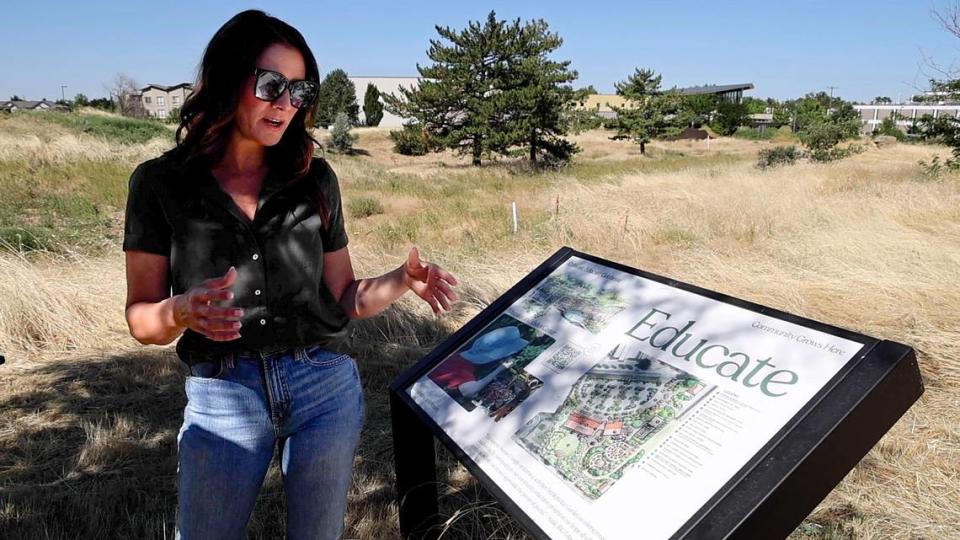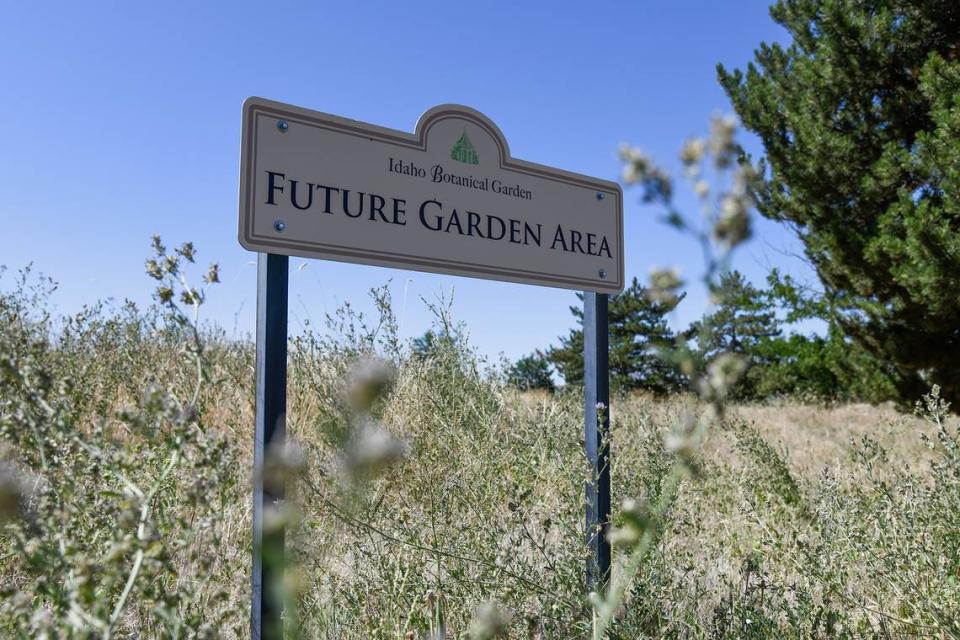Major upgrades are on the horizon at the Idaho Botanical Garden. See what’s in store
Big upgrades are taking root at the Idaho Botanical Garden.
In three phases, and on 18 undeveloped acres, the Garden plans to spend up to $35 million to build a new visitor center, a horticultural therapy garden and interpretive areas for its arboretum and its Boise Foothills land. That’s on top of planned improvements to the 15 acres of land it has already developed.
The projects, part of a reconfigured master plan finalized in 2022, are intended to boost access to education about local plants, trees, food and history; make the grounds more accessible; and introduce new services for the community at a time when the skyrocketing population of the Treasure Valley has pushed the Garden to its capacity.
“We’re ready for our garden to grow,” said Erin Anderson, its executive director, in an interview with the Idaho Statesman.

Only 15 acres — less than half — of the 32 acres the Idaho Botanical Garden leases from the state are developed. The remaining amount is split into parcels of roughly 10 and eight acres in front of and behind the current Garden, respectively, Anderson said.
The changes are planned in three phases. Here’s what’s coming:
Phase 1: Big initiatives
This is the most ambitious — and most expensive — phase, and it requires raising money to pay for it. It’s in the strip of land west of the Garden, between Old Penitentiary Road and Goodman Street, where this batch of changes will be built.
It could take two years for the Garden to complete fundraising for Phase 1, Anderson said. The Garden applied for a conditional use permit from the city on July 13 and will need to go through the approval process, including meetings with the East End neighborhood and the Boise Planning and Zoning Commission.
The Garden aims to finish construction of Phase 1 in three to five years, Anderson said, before moving on to the next two phases.
Phase 1 improvements include:
1. The visitor center
The center will be a hub for educational programming and activities, Anderson said. Visitors will be able to take classes and workshops about where their food comes from or what’s happening inside of a tree during the winter, for example. They’ll be able to learn about the history of the East End neighborhood — within which the Garden sits — and the penitentiary.
“We want people to understand the importance of this space, the importance of the district, long before there was any development there,” Anderson said.
2. A food hub
Plans for the visitor center include a food-processing space with wash stations and cold storage. Local farmers who have extra crops they can’t distribute through wholesaling or farmers markets can use the space to wash, chop and store produce and donate it to food banks, school districts, refugee settlement organizations and other groups to benefit low-income families.
“It’s a connection and network of individuals who are working in different areas of food security and food distribution in the community,” Anderson said.
3. A farmers market
A familiar organization will finally be settling down in the visitor center: The Boise Farmers Market.
The nonprofit market has been roving around the city since it was founded 11 years ago, said Amber Beierle, its executive director, and has always been looking for permanent space. It’s now in its third warm-weather location, and it has moved among at least six indoor winter locations.
Moving into the visitor center will broaden the market’s reach and give it a home year-round, Beierle said. There will be space for 100-125 vendors, and 40-50 of them will be indoors. Farmers will provide products to the food hub, too.
“We couldn’t pass up that partnership,” Beierle said.
4. The arboretum
As for the arboretum, it’s already a part of the Garden — sort of.
A botanical garden is a collection of plants, Anderson said, while an arboretum is a collection of trees and shrubs. Trees and shrubs cover the botanical garden, but there’s no place for people to learn specifically about those that grow best in Boise’s sagebrush steppe ecosystem, such as juniper, oak, locust and redbud trees. Signs in the arboretum interpretive area will educate visitors about those species and the benefits of urban forests.
“We have all those components now, but we don’t have any interpretive signage to help people gain knowledge on the importance of trees within our environment,” Anderson said.
5. The therapy garden
The horticulture therapy garden will be open to the public but geared toward people from at-risk populations, such as adults and children with disabilities, veterans, senior citizens and people leaving incarceration, Anderson said.
Activities will include therapy sessions and counseling. The plans also call for design to make the garden more accessible, including raised planting beds for people in wheelchairs.
6. A new vegetable garden
The existing vegetable garden will be relocated next to the therapy garden, Anderson said. It will be used for educational programming and available for community members to rent so that people can experience growing a healthy meal from the ground up, she said.
7. Educational programs
As more people have moved to the Treasure Valley, Anderson said, the Garden has reached capacity for educational programs. It serves 5,000 children and teenagers every year through direct education, she said. The expansion has the potential to double that number, said Jennifer Parks, the Garden’s development director.
“The opportunity for the types of programming is expanding too,” Parks said.
Phase 2: Beautification
Minor path renovations and irrigation updates are planned in Phase 2 for the 15 acres of the Garden already developed, Anderson said.
Improvements on Outlaw Field, a popular concert venue, will be tiny, she said. It’s historically designated to remain an open field, Anderson said, because it was used as the activity yard for inmates in the penitentiary.
The Garden anticipates small, intermittent closures during Phase 2, including on segments of paths being renovated, she said.
Phase 3: Foothills paths and signs
Eight acres of the Boise Foothills included in the Garden’s property are targeted in Phase 3.
The Garden plans to build wide, wheelchair-accessible pathways so that anyone can take a hike there, Parks said. There will be covered spaces with educational signs about the desert ecosystem of the Foothills, similar to the interpretive area at the arboretum.
Phases 2 and 3 will be self-funded by the Garden, Parks said, using revenue from sponsorships, admission and new memberships driven by the expanded programs at the visitor center.
Anderson said the Garden hopes to finish Phases 2 and 3 in one to three years each after Phase 1 is developed.
The plans could change. The Garden updates its master plan every 15-20 years, the latest being last year, she said. In the Garden’s previous master plan, the visitor center would have been placed inside the 15 acres that are already developed — far from the parking lot. The need for accessibility changed that location in the new plan.
“This is a vision for the future that we’re working towards,” Anderson said. “But also in 15 years, our needs as a community may have shifted.”
Much has changed in the past 20 years about the way people think about accessibility, creating a connection to where our food comes from, and alternative means of therapy, Anderson said. The Garden aimed to incorporate each of those elements when it crafted the new plan.
“We looked at what are the community needs, what is new and innovative that’s happening in the horticulture world,” Anderson said. “And how is it that we can incorporate those needs and those innovations here at the Botanical Garden?”

Erin Anderson takes history, community to heart in new role at the Idaho Botanical Garden
‘Devastated,’ Idaho Botanical Garden could close without help. Winter might not aGlow.
Learn about small landscapes at Idaho Botanical Garden classes

